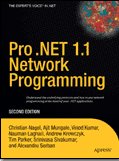When the market plunges 5% in one day, lots of stocks might look like they're on sale. But are they? Here's how to ID the true values. (Get the data below at morningstar.com.)
- Step 1 Look at a stock's forward P/E. This is the price investors are willing to pay for every dollar of expected earnings. Compare this ratio with that of the company's peers and industry benchmark. The S&P 500's forward P/E is 13.8. What you want to see: ratio lower than average but not too low (Matthew Sauer, a senior vice president at value-oriented Ariel Investments, is cautious about P/Es below 8).
- Step 2 Look at the trailing P/E, which is based on a company's past earnings. It will show whether a stock was cheap before the market's recent free-fall. What you want to see: ratio lower than industry average.
- Step 3 Check the price-to-cash-flow ratio. This shows how much cash a company generates per share. It's sometimes a more reliable measure of value than P/E because cash, unlike earnings, cannot be manipulated easily by accountants. Again, compare the ratio with the industry benchmark and peers. What you want to see: ratio lower than average.
- Step 4 Look for stability. A company that isn't highly leveraged (laden with debt) has a better chance of riding out the economic downturn. To find out if that's the case, see the company's balance sheet at The SEC's Web site. Divide total assets by total equity. What you want to see: ratio of 2 or lower (10 or lower for financial firms).
- Step 5 Read the news. No matter what the numbers say, a stock could be a rotten choice if, say, the company is embroiled in a potentially costly lawsuit. Not every stock that appears cheap is a good deal. What you want to see: no obvious problems. Bottom Line: If a stock passes all these tests, you could be onto a good buy.
(Thanks to Carolyn Bigda)





